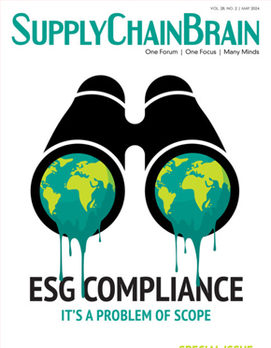
As food science matures and tastes change, consumers are choosing to buy food that’s processed, transported and sold without the aid of artificial preservatives.
While the debate over the use of some preservatives is far from settled, public opinion always moves faster than scientific consensus. And the thing about modern consumers is that they have no problem abandoning brands if those brands can’t meet their changing demands. Food processing giants are quickly expanding their clean label offerings as a result.
This puts great pressure on food-industry shippers. Clean-label products have a much narrower window of freshness, meaning that shippers must get them to market much faster. It’s never been more important to have flexible, steady refrigerated truckload capacity at the ready.
A Need for Predictability
Shippers rely on smart planning and scheduling to meet customers’ needs. The more predictable the schedule, the easier it is for producers to secure shipper availability at a steady price.
Artificial preservatives increase product shelf life. That provides shippers the breathing room they need to meet their obligations when schedules are thrown out of whack, or when freight volumes cycle up faster than capacity becomes available.
With more food free of preservatives, that breathing room is all but gone. The difference between delivering fresh products to market and having to throw them out due to expiration has gotten much smaller. It requires that food processors have wider access to refrigerated trucks and warehouses, without the luxury of being able to plan as far ahead. The most immediate result is an increase in the price of shipping fresh food. And the clean-label push is nudging costs upward on non-food freight items as well.
The increase in clean label products is not occurring in a vacuum. It’s one of a handful of factors squeezing shippers in the U.S.
One such factor is a lack of adequate trucking capacity. A recent report found that the shipping industry is short almost 100,000 truck drivers. Another is the electronic logging device mandate. Starting late last year, new ELD rules went into force, removing more of the flexibility that truckers have enjoyed.
All of these factors have created a perfect storm which favors truckers, and leaves pretty much everyone else stuck paying higher prices. Here’s how it plays out:
- Consumer behaviors signal to fresh food processors that they’ll lose big if they don’t offer clean-label products.
- Processors make the switch to clean-label offerings, knowing from the start that shorter shelf lives mean they’ll need increased refrigerated shipping capacity on shorter notice.
- It’s a trucker’s market. With not enough drivers on the road, those who remain can more freely choose which freight to haul, usually based on the rates they’ll earn.
- Clean-label food processors are willing to pay truckers higher rates to haul their food because they know the cost can be passed on to consumers willing to pay a premium for the products they want.
- All other things being equal, truckers will take the higher-paying jobs. If that means opting to haul specialty cheeses or organic whole milk instead of lumber or televisions, so be it. Money talks.
The economy is good. Shipping volumes are high and rising. Rates are surging. Data suggests these trends will persist for some time. Clearly, the pressure is on for food industry players up and down the supply chain. The ones that continue to meet their deadlines, despite the added challenge of clean labels, will thrive.
Partnering With a 3PL
A third-party logistics (3PL) provider can play a vital role in ensuring that your fresh products get to market on time, every time. 3PLs have access to a deep pool of partner carriers offering refrigerated truckload capacity. They’ve also mastered the latest digital tools used to identify the most efficient fresh food shipping lanes. The combination results in the most competitive shipping rates, no matter the product and no matter the origin or destination.
All it takes to make the partnership work is clear communication. So long as customers keep their logistics providers updated about shifts in production volume or changes in schedule, 3PLs can relay that information to partner carriers quickly, and assure customers will have shipping capacity when they need it.
Clean labels are making things a little harder on everyone. But a 3PL partnership could give you the edge in meeting consumer demand, and ensuring that clean labels remain an opportunity instead of a cost.
Mike Miller is a branch manager for Jacoby Logistics.




.jpg?height=100&t=1715228265&width=150)


